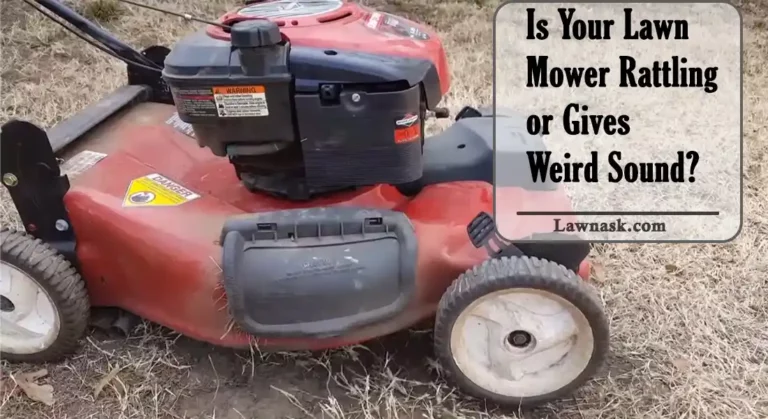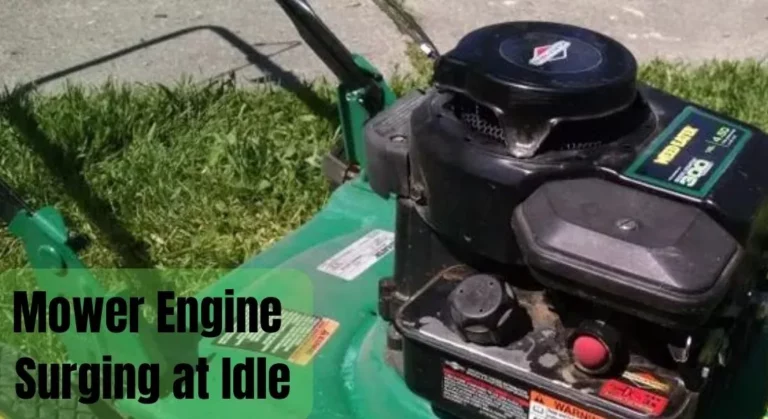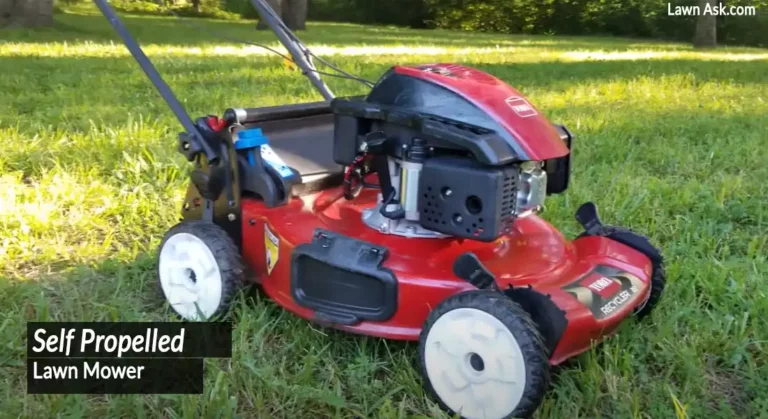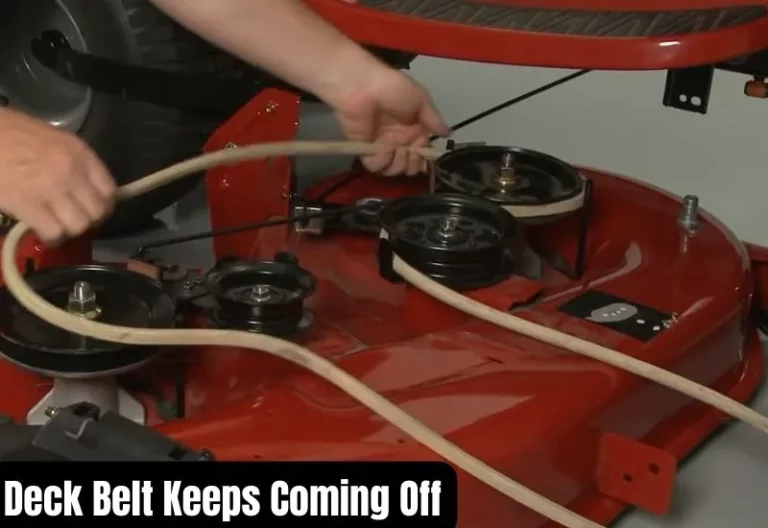7 Reasons Why Your John Deere Zero Turn One Side Not Working Anymore!
John Deere zero-turn mower driving wheels are driven by two separate systems. But whenever one side of this drive system fails, the user will notice that one side of their JD zero-turn is not working.
Mostly John Deere Zero Turn one side fails to function properly due to:
- Displaced or overriding Freewheeling Rod,
- Unrivaled Tire Compression on both sides, or
- Old or damaged Dampeners.
But besides the mentioned ones, other potential conditions can cause JD zero turn mower’s one side not to work. Continue reading to learn about all the possible causes of such a problem and how to solve them.

7 Reasons Why Your John Deere Zero Turn One Side Not Working?
Such a commotion might arise due to one of the following reasons_
1. Displaced or overriding Freewheeling Rod
John Deere zero-turn models feature a freewheeling rod used for disconnecting their hydraulic motors.
This rod is located around the mower blade control lever. It controls the mower’s direction and even allows disengaging of the blade without turning off the engine.
However, if this rod is not installed properly, bent, or gets displaced from its position, one side of your mower will not work.
2. Unrivaled Tire Compression on Both Sides
Tire compression is the force exerted by the tire against the ground.
If the tire pressures are different on each side or one side’s tire loses air quicker than the other side due to low pressure, one side of the mower will engage less than another.
Reasons Why One Side Tires or Wheels fails to Hold Air:
- Damaged or broken valve stem
- Faulty or incorrect installation of the valve stem
- Damaged wheels
3. Damaged or stripped Spline:
The spline is a tiny metal element inside the pulley system that connects the deck blade to the shaft of your JD mower.
Over time this small metal can become weak or even entirely stripped out. If that happens, it will cause the mower blade to rock on one side.
- Old or damaged Dampeners:
JD zero-turn mowers have steering dampeners to prevent unexpected or excessive load on the pumps and to increase mower driving performance.
Sadly, with time, these dampeners can become worn or destroyed to cause one side of your mower to pull like that.
- Brake pulling or dragging to one side:
Mower brakes tend to drag like that due to a piston trapped within the brake pads, faulty pads, internal misalignment, or the caliper locking up.
- Mismatched Traction adjustments:
The traction adjustment is located on the backside of your zero-turn mower, right beneath the rider seat.
If the traction is not set evenly on both sides and both wheels are driven forward with the same throttle effort, one wheel will transfer power faster than another.
- Any Issues in the Hydraulic System:
Any Hydrostatic system issues can also cause your JD zero turn one side to malfunction, such as air trapped inside your John Deere Hydro motor or the Hydro transmission pump failing to generate enough power.
How to If Fix Your John Deere Zero Turn One Side Not Working? (Step-By-Step Method)
Check out the detailed method of troubleshooting & fixing your John Deere ZT if its one side malfunctions or fails to work_
Step-1_Look for any defective issues with the Freewheeling Rod:
First, you need to remove the spark plug wire to prevent the accidental starting of the engine. Then, take off the blade or blades from the mower deck to get access to that rod to observe either side of the freewheeling rod.
- If the freewheel rod is bent or damaged, you need to straighten the rod accordingly.
- If the rod looks slightly bent, use a pair of pliers to adjust the rod.
- If that does not work, remove the rod and use an adjustable wrench or a hammer & chisel to straighten it as needed.
- Reassemble everything and secure all the connections securely before testing.
If the damage is severe and not repairable, immediately replace the freewheel rod.
Step-2_Check the Tire Compression on Both Sides:
Start the investigation by Testing the Tire pressure:
- Use a tire gauge, standalone gauge, or gauge attached to an air supply & some sort of pump like the general bicycle pump.
- Locate the tire valve and remove the cap.
- Place the gauge on the valve and press down to release some air.
- Check the reading and remember the PSI.
- Do the same on the other side and compare.
- Refill the weaker side tire/s with an adequate amount of air.
Still, the tires on one side can’t hold the air?
- Inspect the valve stem to see if it is installed correctly and if the valve stem has an installed fault, Disassemble and reinstall the valve stem correctly.
- If the valve stem looks bad (damaged or broken), Replace the valve stem with a new one on your mower wheel.
- Do not forget to check and replace the wheels if necessary.
Related Post: How To Move A John Deere Zero Turn Mower That Won’t Start?
Step-3_Look for Damaged/stripped Spline:
Inspect and if the spline has become slightly weak or damaged, repair it by following the steps_
- If there are any signs of cracks, replace the entire gear case.
- If you see dents or gouges and no cracks, smooth the surface using a hand file or grinder.
- Once the splines are smooth enough put some grease on them.
However, if the spline has been damaged too badly, completely worn out, or stripped out, replace it.
Step-4_Look for any cracks or any sign of oil leaks in the Dampener:
If you see any sign of a crack/tiny hole in the damper, that means your steering damper has an issue. Or if you notice that oil or grease coming out of them while they spin, it means they are faulty.
Replacing the dampeners is the only solution for you.
Step-5_Inspect the Brake pads:
Get access & check whether the brake pad got stuck due to trapped pistons inside or because excess built-up crud locked up the caliper.
If the caliper piston got seized or locked up, disconnect the caliper from the disc. Then, clean the caliper with an ultrasonic cleaner and check if it’s working correctly.
If the brake pad itself is faulty, replace the brake pad.
Step-6_Adjust the Traction adjustment Correctly:
If your mower has the wrong traction adjustment, locate the traction adjusting screw underneath your mower seat.
- Turn the screw counterclockwise to enhance traction (if your tires are constantly slipping) or,
- Turn clockwise to decrease traction (if you’re having trouble steering and moving through tight corners) with a hex key or standard flat-head screwdriver.
Related Post: Disadvantages Of Hydrostatic Transmission (Explained)
Step-7_Troubleshoot Hydrostatic System for any potential issue:
Chock the front wheels and lift the rear wheels of your John Deere a few inches off the ground. Find the hydro engagement rod and push or pull the rods to disengage the drives.
Start the engine and accelerate to the maximum RPM.
Then, engage a forward drive and reach the maximum level. And hold it for around one minute.
Now watch to see if the wheels move when you use backward or forward drive. If the wheels do not spin, it means the Hydros are fully disengaged.
Next, detach the Hydros and try to reverse drive.
Let the hydrostatic system bleed the air. If that fails, contact your dealer or nearest service center to perform a professional air purge on your mower.
Place your mower down, engage the brake, as well as the hydro, and remove wheel chocks.
Check the hydro fluid level and refill it as needed.
John Deere Zero Turn One Side Not Working – FAQs
Why is my John Deere zero-turn cutting lower on one side?
Due to incorrect deck/blade adjustment, uneven lawn surfaces, or running the mower at a high ground speed.
Why is there a strip of grass left by my John Deere?
Because of the dull, broken, or damaged Blades on your mower deck.
Why does my zero-turn mower rip up the grass every time I turn?
Such a situation mostly occurs when one of the wheels is locked or stuck in place.
What is the expected life of a John Deere zero turn?
John Deere zero-turn mowers generally have about 2,000 hours of lifespan.
Related Posts:
- Troubleshooting the issue of a loose deck belt on Craftsman riding mowers
- Troubleshooting guide: Craftsman riding mower won’t start
- Step-by-step guide to resolving a stuck-up John Deere mower deck
- Troubleshooting guide for a Ryobi mower with a non-spinning blade
- Troubleshooting and fixing abnormal noises in your lawn mower





